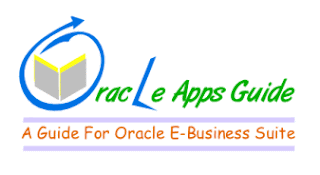Oracle Applications installs in a machine it creates a base directory with the name ORACLE. This is the base directory for accessing the application.
Oracle Applications supplied in three flavors
1. Production Oracle Applications: used for implementing in any organization.
2. Vision Oracle Applications: used for Demonstration or Training purpose.
3. Test Oracle Applications: used for R&D purpose
Product Directory Structure of Oracle Applications
VISDB: Consists of Oracle 8i / Oracle 9i / Oracle 10g Database executable files.
VISORA: Captures 8.0.6 / 9iAS / 10giAS middleware Database executable files.
VISCOMM: Captures Control Script files, which are used to Start or Stop the
Application Services.
VISDATA: Captures all .DBF files.
VISAPPL: Captures all Module Specific Directories and Some Special Directories.
GL_TOP: (APPL_TOP/GL/11.5.0) is one of the Module Directory of Oracle Applications.It consists of a release directory (i.e. 11.5.0) under which Forms, Reports, BIN, LIB, SQL,etc.,
GL_TOP/11.5.0/Forms/US has formed directory to store all.FMX (Compiled) Form files of a specific module.
GL_TOP/11.5.0/Reports/US is a reports directory to capture all the.RDF (Compiled) Report files of a specific module directory.
The US is a language specific directory.
GL_TOP/11.5.0/BIN will capture the C, C++, PRO*C, SQL *LOADER etc., files.
GL_TOP/11.5.0/LIB will capture all.OBJ files of C, C++ or JAVA CLASS files.
GL_TOP/11.5.0/Message will capture all.MSB message body files.
GL_TOP/11.5.0/LOG will capture all.LOG files.
GL_TOP/11.5.0/OUT will capture all.OUT files.
GL_TOP/11.5.0/SQL will capture all .SQL script files.
GL_TOP/11.5.0/HTML will capture all .HTML, .HTM web files.
GL_TOP/11.5.0/FND is a Special Directory known as Application Object Library (AOL) directory. It is used to capture all Modules Application Executable Files.
GL_TOP/11.5.0/AU is an Application Utility (AU) Directory. It consists of an application release b‐Directory, which consists of Forms and Resource directories. It is used to store all.FMB and.PLL and PL/SQL Library files.
GL_TOP/11.5.0/AU/11.5.0/Forms/US will capture.FMB Form files of all Modules.
GL_TOP/11.5.0//AU/11.5.0/Resource is used to store.PLL and.PL/SQL Library files of Oracle Applications.
DATA MODEL
When we install Oracle Database by default system will create SYS and SYSTEM schemas. These consist of all Data Dictionary Tables. Like this, if we install Oracle Applications System will automatically create schemas of all Modules (i.e. GL, AR, AP, etc.) with the respective module name as User and Password. Along with these schemas some special Schemas i.e. APPS, APPLSYS, APPLSYSPUB will be created for the special purpose.
APPLSYS Schema: This is a special Schema consists of the files starts with FND, ALR, WF, and AD.
APPLSYSPUB Schema: This schema is a collection of public synonyms of all FNDTables, which are used for User verification. This is the Gate Way User ID of OracleApplications.
Note:
1. When we are changing the APPS Schema password, first we have to change in the backend for both APPS and APPLSYS Schemas.
2. Password for both APPS and APPLSYS should be same.
3. Change the password of both the Schemas in Front‐End and Back‐End.
4. Drop the Concurrent Manager Services and re‐create the Concurrent Manager
Service with the Password as APPS Password.




Comments
Post a Comment